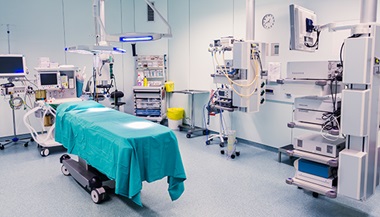Preparing for Surgery: The Operating Room
What to expect the day of surgery
On the day of surgery, you will meet with the medical team involved in your surgery. This will include your surgeon, the anesthesiologist, an operating room nurse, and various other healthcare professionals.
Getting ready for surgery
You may expect some of the following to happen:
-
You may need to change into a hospital gown.
-
You will receive an ID bracelet.
-
An intravenous catheter (IV) may be inserted in your forearm or other location for anesthetics and other medicines.
-
You may be transported on a stretcher to the operating room.
What does the operating room look like?
The operating room can be an intimidating, busy place. It has a lot of unfamiliar technical equipment. The following is a brief list of equipment you may see in the operating room. Each operating room varies depending on the type of surgery being done:
-
The operating table in the center of the room can be raised, lowered, and tilted in any direction.
-
The operating room lamps allow for brilliant illumination without shadows during surgery.
-
You will be connected to various monitors that keep track of your vital signs. These include your heart rate and blood pressure.
-
A ventilator or breathing machine stands by the head of the operating table. If your procedure is done under general anesthesia, a ventilator will breathe for you during the procedure by moving oxygen and air in and out of your lungs.
-
Sterile instruments to be used during surgery are arranged on a stainless steel table.
-
A diathermy machine, to control bleeding, usually is present.
-
If the surgery needs it, a heart-lung machine, or other specialized equipment, may be brought into the room.
-
The operating room will likely be cold to minimize bacterial growth.




